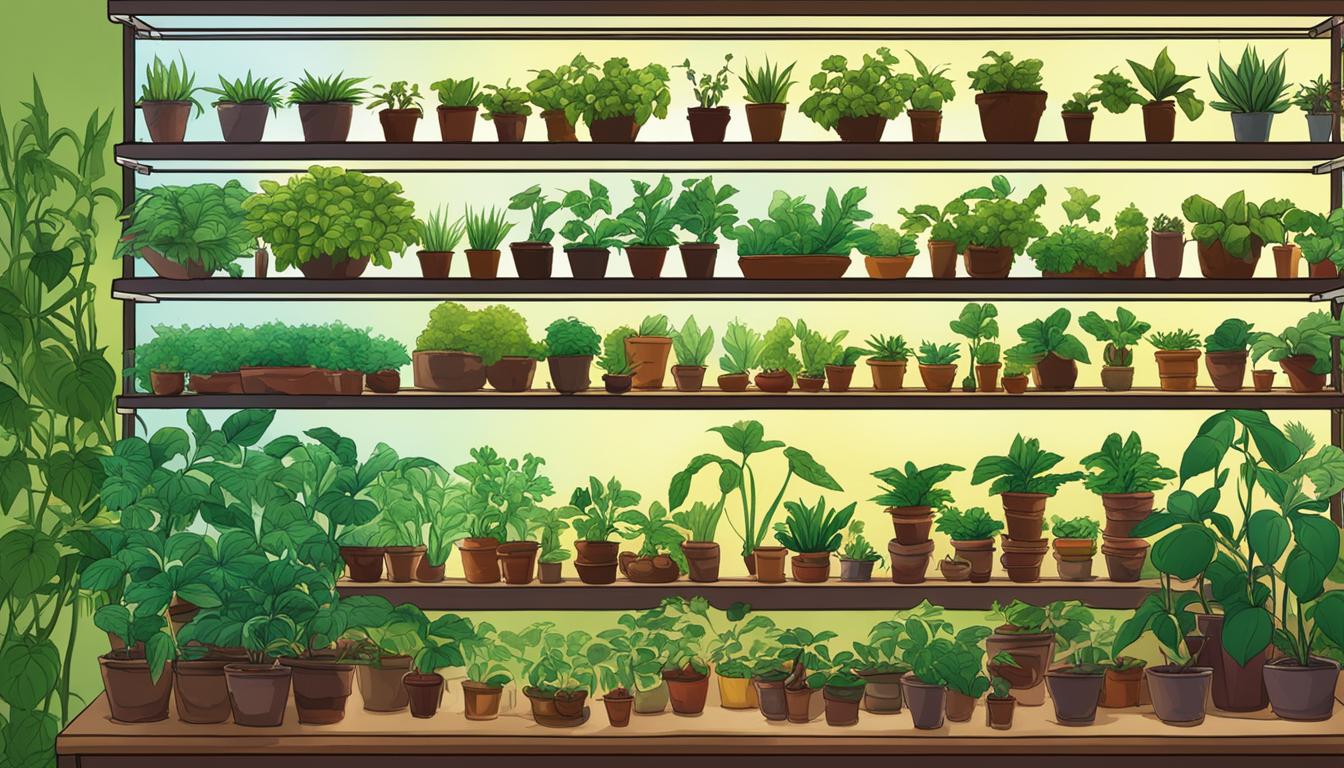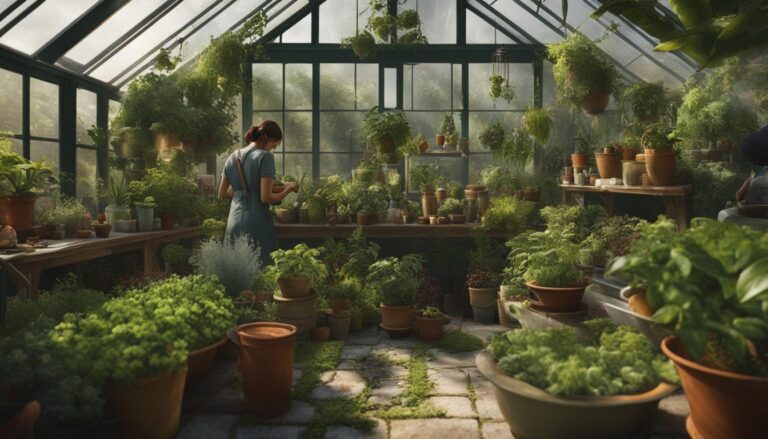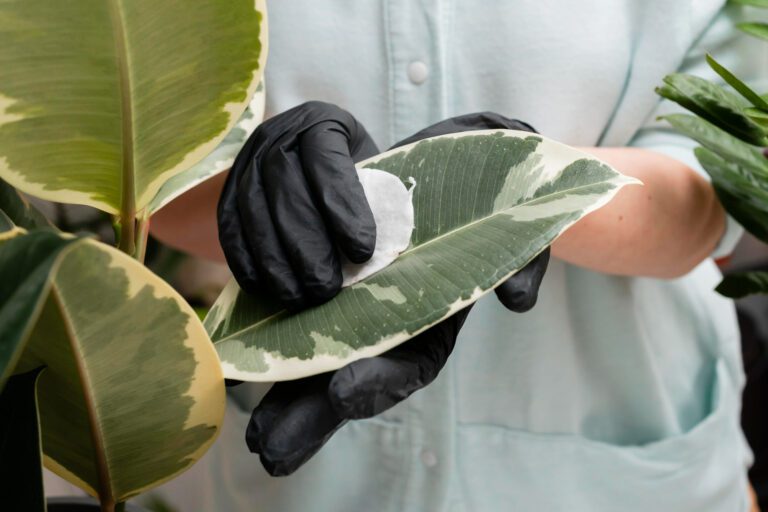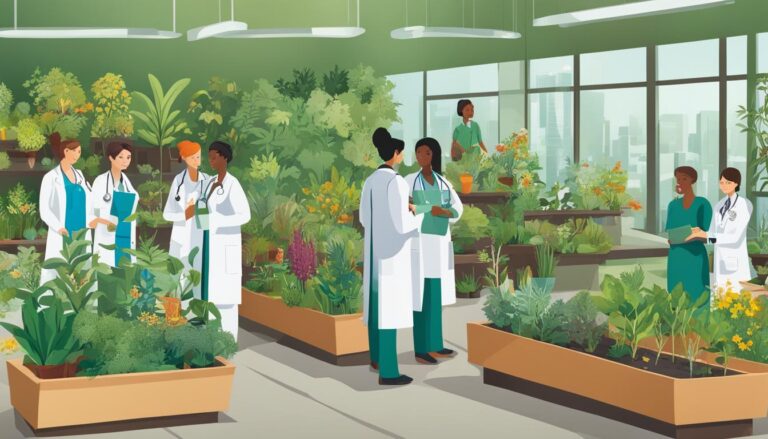
Light plays a crucial role in the health and growth of indoor plants. It provides the energy needed for photosynthesis, the process by which plants convert light into food. However, when natural light is insufficient, artificial lighting becomes necessary to ensure optimal plant growth.
In this article, we will explore the effects of artificial light on indoor plant health and discuss the key factors to consider for successful indoor gardening.
Key Takeaways:
- Artificial lighting is essential for indoor plants when natural light is insufficient.
- Light intensity, duration, and quality are key factors that affect plant growth.
- Too much direct light can harm plants, while insufficient light can result in poor growth and development.
- There are different types of indoor grow lights available, including incandescent, fluorescent, LED, HID, induction, halogen, and energy-saving lamps.
- Sunlight provides the best spectrum of light for plant growth, but artificial lighting can supplement natural light in areas with limited access to sunlight.
Types of Indoor Grow Lights
When it comes to providing artificial light for indoor plants, there are several types of grow lights to choose from. Each type has its own characteristics and benefits, allowing you to find the right option for your specific plant needs.
Incandescent grow lights: These lights emit a warm, yellowish light that is not ideal for plant growth. They do not provide the optimal spectrum of light needed for photosynthesis and can lead to poor plant health.
Fluorescent grow lights: These lights are commonly used for indoor plant lighting. They are more energy-efficient than incandescent lights and provide a cooler, bluish light. Fluorescent lights are suitable for a wide range of plants and can support healthy growth.
LED grow lights: LED lights have become increasingly popular for indoor gardening. They are the most energy-efficient option and can provide various light spectrums to support different stages of plant growth. LED lights are compact, durable, and produce minimal heat, making them suitable for a wide range of indoor plants.
| Type | Light Spectrum | Energy Efficiency | Heat Generation |
|---|---|---|---|
| Incandescent | Warm, yellowish | Low | High |
| Fluorescent | Cool, bluish | Moderate | Low |
| LED | Customizable | High | Low |
Comparing Indoor Grow Lights
- Incandescent lights are not recommended for plant growth due to their low energy efficiency and limited light spectrum.
- Fluorescent lights offer a more balanced light spectrum and are suitable for a wide range of plants.
- LED lights are the most energy-efficient and customizable option, providing the necessary light spectrum for optimal plant growth.
Choosing the right type of indoor grow light depends on your specific plant species and their light requirements. Consider factors such as energy efficiency, light spectrum, and heat generation to ensure you provide the best artificial lighting for your indoor plants.
Sunlight Vs Artificial Light for Plants
When it comes to providing light for indoor plants, both sunlight and artificial light have their advantages and disadvantages. Sunlight, with its balanced spectrum of light, is generally considered the best option for plant growth. However, artificial lighting can be used to supplement natural light and enhance the quality of light plants receive.
Artificial light is particularly beneficial in situations where access to natural light is limited, such as in dark corners or houses with minimal windows. It can also be advantageous for plants that struggle during the winter months or for incorporating a consistent light source into a plant care routine.
LED lamps are commonly used for indoor plant lighting as they are compact, energy-efficient, and provide an optimized emission spectrum. LED lamps offer versatility in terms of light customization, allowing for the adjustment of wavelengths to suit the specific needs of different plants. Additionally, LED lamps generate minimal heat, making them safe and suitable for plant growth.
Benefits of Artificial Light for Indoor Plants:
- Supplements natural light in areas with limited access to sunlight
- Provides consistent light source for plants during winter months
- Allows for customization of light spectrum to optimize plant growth
- Compact and energy-efficient
- Generates minimal heat, reducing risk of plant damage
Ultimately, the choice between sunlight and artificial light for indoor plants depends on factors such as light availability, plant species, and specific growing conditions. By understanding the benefits of both sunlight and artificial light, indoor gardeners can create optimal environments for their plants and ensure healthy growth.
Tips for Growing Plants Indoors With Artificial Light
Growing plants indoors with artificial light can be a rewarding and effective way to nurture your green space. To ensure successful growth, there are several tips to keep in mind.
1. Temperature and Distance: It’s essential to maintain an appropriate temperature for your plants and place them at the right distance from the light source. Different plant species have varying temperature requirements, so be sure to research the optimal temperature range for the plants you are growing.
Additionally, the distance between the plants and the light source is crucial. Most plants thrive when positioned 6-12 inches away from the light to avoid burning or overheating.
2. Reflective Surfaces: Reflective surfaces can be utilized to increase light intensity if needed. Placing mirrors or foil around your plants can help redirect and amplify the light, providing better coverage and ensuring more efficient photosynthesis.
3. Regular Rotation: To promote even exposure to light, it’s important to regularly rotate your plants. This helps prevent uneven growth and ensures that all parts of the plant receive adequate light. You can rotate the plants every few days or as needed, taking care to monitor their growth and adjust accordingly.
4. Monitoring and Prompt Action: Carefully monitor your plants for any signs of stress or issues related to light exposure. If you notice any pale leaves, wilting, or stunted growth, it may indicate that the plants are not receiving enough light.
Conversely, if the leaves are turning yellow or developing brown spots, it could be a sign of too much light. Prompt action, such as adjusting the distance or intensity of the light source, can help remedy these issues before they become more severe.
| Tips for Growing Plants Indoors With Artificial Light |
|---|
| Temperature and Distance |
| Reflective Surfaces |
| Regular Rotation |
| Monitoring and Prompt Action |
Characteristics of LED Lamps for Flowers
LED lamps are widely regarded as one of the best options for providing artificial light to indoor plants. Their unique characteristics make them highly suitable for promoting plant growth and development.
Firstly, LED lamps are compact and energy-efficient. This means that they can be easily integrated into any indoor gardening setup without taking up too much space or consuming excessive electricity.
LED lamps also have an optimized emission spectrum that can be customized to provide specific wavelengths of light. This versatility allows for tailored lighting solutions that cater to different stages of plant growth, from seedling to flowering.
Another advantage of LED lamps is their long lifespan. They have a significantly longer operational life compared to other types of grow lights, such as fluorescent or incandescent bulbs.
This not only translates to cost savings in the long run but also ensures that plants receive consistent and reliable light throughout their growth cycle. Additionally, LED lamps generate minimal heat, reducing the need for additional cooling measures and minimizing the risk of overheating plants.
Advantages of LED Lamps for Plants:
- Compact and energy-efficient
- Customizable emission spectrum
- Long lifespan
- Minimal heat generation
In summary, LED lamps offer a range of desirable characteristics that make them an excellent choice for indoor plant lighting. Their compact size, energy efficiency, customizable spectrum, long lifespan, and minimal heat generation all contribute to creating optimal conditions for plant growth.
Whether you’re a beginner or an experienced indoor gardener, utilizing LED lamps can help you achieve thriving and healthy plants.

How Much Light Do Plants Need?
The light requirements of plants vary depending on their species and specific needs. It is essential to understand the optimal light intensity for indoor plants to ensure their healthy growth and development.
Low-light plants typically require around 50-250 foot-candles (FC) of light to thrive. These plants are well-suited for areas with less natural light or darker corners of a room.
Medium-light plants, on the other hand, prefer a slightly higher light intensity ranging from 250-1,000 FC. High-light plants have the highest light requirements, needing at least 1,000 FC for optimal growth and flowering.
Aside from light intensity, the distance between the plants and the light source also plays a vital role. Most plants should be positioned approximately 6-12 inches away from the light to ensure they receive adequate light without getting scorched.
Fluorescent lights are a popular choice for indoor plant lighting as they are energy-efficient and provide sufficient light for most plants. It is recommended to expose plants to light for 16-18 hours per day, considering that most plants benefit from extended periods of light exposure.
FAQ
What are the effects of artificial light on indoor plant health?
Artificial light is crucial for healthy indoor plant growth as it provides the energy needed for photosynthesis. It affects photosynthesis, stem length, leaf color, size, and flowering. However, too much direct light can harm plants, causing pale leaves, browning, and death.
What are the types of indoor grow lights?
There are several types of indoor grow lights available, including incandescent, fluorescent, LED, High-Intensity Discharge (HID), induction lighting, halogen lighting, and energy-saving lamps.
Is sunlight or artificial light better for plants?
Sunlight is typically the best for plant growth as it provides a balanced spectrum of light. However, artificial lighting can be used to supplement natural light and improve the quality of light plants receive.
What are some tips for growing plants indoors with artificial light?
Some tips for growing plants indoors with artificial light include ensuring appropriate temperature, placing plants at the right distance from the light source, using reflective surfaces to increase light intensity if needed, and regularly rotating plants for even exposure to light.
What are the characteristics of LED lamps for plant growth?
LED lamps are compact, energy-efficient, and provide an optimized emission spectrum. They can be customized to produce different wavelengths of light, making them versatile for different stages of plant development. LED lamps are also durable, generate minimal heat, and have a long lifespan.
How much light do plants need?
The amount of light needed by plants varies depending on their species and light requirements. Low-light plants generally require 50-250 foot-candles (FC) of light, while medium-light plants prefer 250-1,000 FC. High-light plants require at least 1,000 FC for optimal growth and flowering.







2 Comments
Comments are closed.